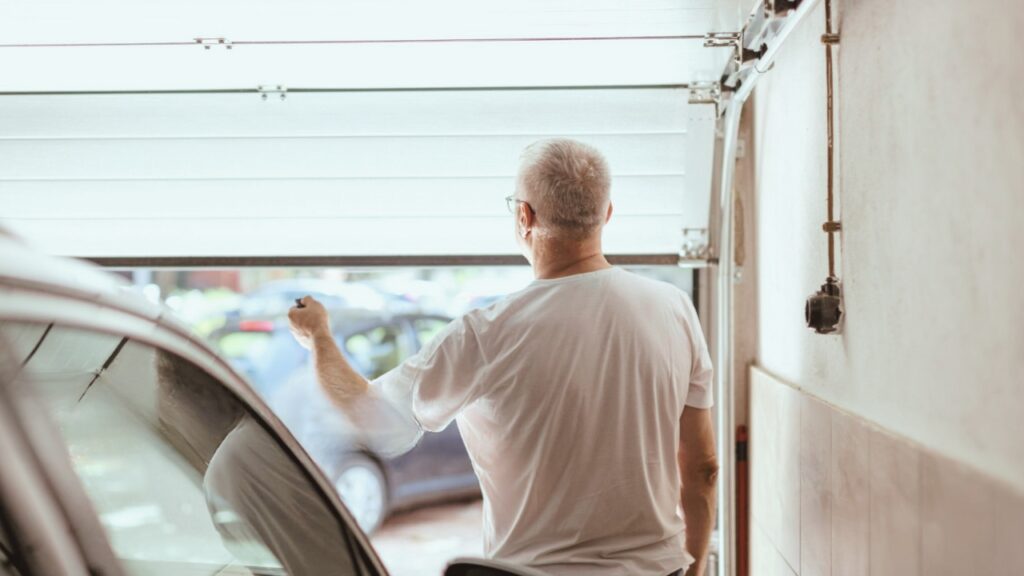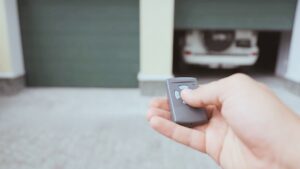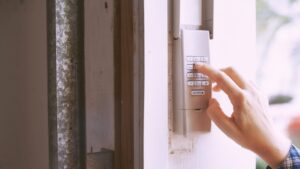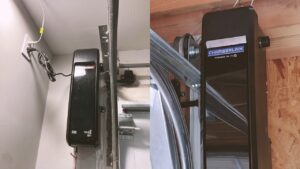Connect With A Garage Expert
Connect with local experts, Compare quotes, Get the best price.
If your garage door motor keeps running, it’s important to address this issue immediately to prevent motor wear, overheating, and potential hazards.
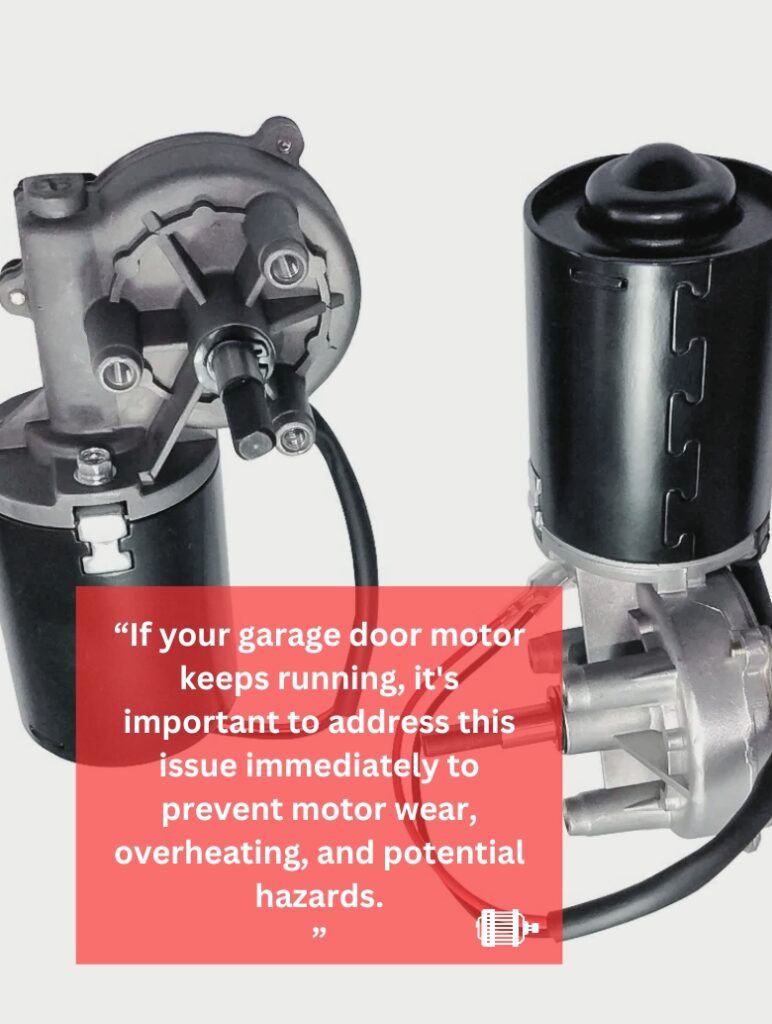
Common issues causing a garage door motor to run continuously include misaligned limit switches, faulty safety sensors, obstructions in the door’s path, and wiring problems.
In this guide, you will learn about the most common issues that cause a garage door motor to keep running and what you can do to fix them.
What Should I Do If My Garage Door Motor Keeps Running?
When dealing with a garage door motor that keeps running, safety should be your top priority. Here are some safety precautions to keep in mind:
- Disconnect Power: Before attempting any repairs, make sure to unplug the garage door opener or turn off the circuit breaker to prevent any electrical hazards.
- Disengage Trolley: The manual disconnect lever, usually attached to a red rope, might be disengaged. Re-engaging is typically a straightforward process involving pulling the emergency release rope up and back toward the opener.
By following these safety precautions, you can ensure that you are working on your garage door motor safely and responsibly.
Step 1. Check the Limit Switch
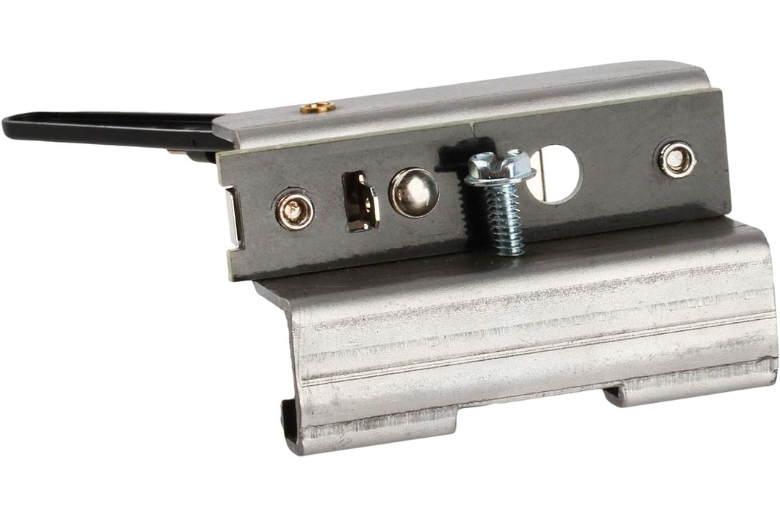
If your garage door motor keeps running even after the door has opened or closed completely, the limit switch might be the reason.
The limit switch signals the opener to stop running. If it’s not functioning properly, the opener will continue to run even when it’s not supposed to, potentially leading to over-travel and damage to the door and opener, wearing out the motor prematurely, and posing significant safety risks
The first step in checking the limit switch is to visually inspect it. It is located on the side of the opener rail unit. Look for a small component with a wire connected to it.
Look for signs of wear or damage, such as frayed wires or a cracked housing. If you notice any issues, the limit switch likely needs to be replaced.
If the limit switch is okay, the next step is to adjust its settings. A step-by-step guide will walk you through the process to ensure it functions correctly.
- Step 1. Ensure power is disconnected for safety.
- Step 2. Identify the “open” and “close” screws.
- Step 3. Turn the “open” screw to set desired open position.
- Step 4. Turn the “close” screw to set desired close position.
- Step 5. Reconnect power and test door movement.
After adjusting the switch, test the garage door motor for proper functionality. Simply open and close the door several times to ensure the motor stops running as intended.
Step 2. Check Stuck or Faulty Sensor

If your garage door motor keeps running, it may be due to a faulty sensor. The sensors are located on both sides of the garage door and detect any obstacles in its path. If they are not functioning properly, the motor may continue to run even if the door is fully open or closed, leading to unnecessary stress on the motor and other components of the garage door system.
One common issue with sensors is misalignment. If the sensors are not aligned properly, they may not be able to detect obstacles in the door’s path. To check for misalignment, visually inspect the sensors and make sure they are facing each other and at the same height. If they are not, adjust them accordingly until they are aligned.
Another issue with sensors is dirt or debris buildup. If the sensors are dirty, they may not be able to detect obstacles in the path of the door. To clean the sensors, use a soft cloth or brush to gently remove any debris or dirt buildup. Be careful not to scratch the lenses or damage the sensors in the process.
If you have checked and adjusted the sensors, but they still do not function properly, they may be faulty and need replacement.
Pro tip. Consult with a professional to determine the best course of action.
Once the sensors are cleaned and aligned, test the garage door motor to ensure proper functioning.
Step 3. Lubricate Moving Parts
To prevent your garage door motor from running continuously, it is essential to keep the door’s moving parts lubricated every six months. The tracks, rollers, and hinges require lubrication to ensure smooth operation. Applying lubricant to these parts can help reduce friction, prevent wear and tear, and ultimately prevent the motor from overworking.
To lubricate the tracks, apply a small amount of silicone spray or white lithium grease to a clean cloth and wipe it along the length of the tracks. Be sure to wipe away any excess lubricant to prevent it from dripping onto the floor.
The rollers also require lubrication to ensure smooth operation. Apply a small amount of lubricant to each roller, making sure to cover the entire surface. Use a clean cloth to wipe away any excess lubricant.
Lastly, the garage door hinges also require lubrication. Apply a small amount of lubricant to each hinge, making sure to cover all the moving parts.
By following these simple steps, you can avoid costly repairs and prolong the life of your garage door motor.
Step 4. Check for Wiring Issues
If your garage door motor keeps running, there may be wiring issues that need to be addressed. Faulty or loose wiring can disrupt the signals that are sent to the motor, causing it to continue running even when it shouldn’t.
To check for wiring issues, start by inspecting the wiring connecting the motor to the motherboard. Look for signs of damage or wear, such as frayed wires or loose connections.
It’s also important to check the wiring that connects the control board to the wall switch or remote control. If these wires are damaged or loose, the signals may not reach the control board, which can cause the motor to keep running.
If wiring issues are ruled out and the motor persists, a faulty control board may be the cause. Consider replacing it to resolve the issue.
By checking for wiring issues and addressing any problems that you find, you can help ensure that your garage door motor operates correctly.
Connect With A Garage Expert
Connect with local experts, Compare quotes, Get the best price.
Step 5. Adjusting the Force and Speed Settings
It’s important to adjust the force and speed settings of your garage door opener. These settings dictate the force used to open and close the door and its operating speed.
Here’s how you can adjust these settings:
- Step 1. Locate the force adjustment screws on the motor unit. These screws are usually labeled “up force” and “downforce.”
- Step 2. To adjust the force, turn the screws clockwise to increase the force or counterclockwise to decrease it. Be sure to make small adjustments and test the door after each adjustment to avoid damaging the motor or the door.
- Step 3. If your motor has speed adjustment screws, locate them and adjust them in the same manner as the force screws.
- Step 4. Once you have made the necessary adjustments, test the door to ensure that it opens and closes smoothly and that the motor stops running when it is fully open or closed.
If you have ruled out issues with the force and speed settings, it may be necessary to investigate other potential causes.
Step 6. Reset the Garage Door Opener
If your garage door motor keeps running, resetting the garage door opener’s control panel may help solve the problem. Follow these steps to reset the control panel:
- Locate the “Learn” or “Program” button on the garage door opener’s control panel. This button is usually located near the antenna wire or the LED light.
- Press and hold the “Learn” or “Program” button for about 10 seconds until the control panel’s LED light turns off.
- Release the button and wait for the LED light to turn back on.
- Press the button on your remote control that you use to open and close the garage door. The LED light on the control panel should flash once.
- Press the button on your remote control again. The LED light on the control panel should flash twice.
- Test the garage door opener by opening and closing the door using the remote control.
If resetting the control panel doesn’t solve the problem, there may be an issue with the garage door opener’s motor or other components. It’s best to contact a professional garage door technician to diagnose and repair the issue.
Signs of a Malfunctioning Garage Door Motor
Here are common indicators of a faulty garage door motor:
1. Unusual Noises
Uncommon noises during operation can indicate internal wear or damage to the motor’s gears. Grinding or whirring sounds could suggest that the gears are worn out or damaged, and buzzing or humming sounds could indicate electrical issues or a failing motor.
2. Intermittent or Non-Responsive Operation
If your garage door motor is intermittently responsive or non-responsive, it could be a sign of a malfunction. The motor may be struggling to lift the door due to a lack of power or a faulty circuit board.
3. Slow Movement or Hesitation
A delayed start, where there’s a noticeable lag between activating the opener and the door’s movement, indicates potential issues. Additionally, if you observe the door moving at a reduced speed, it suggests that the motor is struggling to operate efficiently.
4. Overheating
Motors that become too hot during regular operation may shut down temporarily as a safety measure. This overheating could signal that the motor is being overworked, potentially due to internal damage or obstructions within the system.
5. Door Reverses Automatically
If the door reverses direction unexpectedly, even in the absence of obstructions, it could signal a malfunction in the motor’s control system or sensitivity settings.
A malfunctioning motor can be dangerous and could lead to further damage to your garage door or even injury.
When to Call a Professional

If you’ve tried troubleshooting your garage door motor and it still keeps running, it may be time to call a professional. While some issues can be DIY-ed, there are certain situations where it’s best to leave it to the experts.
Connect With A Garage Expert
Connect with local experts, Compare quotes, Get the best price.
Here are some signs that you should seek professional help.
- You’re unable to diagnose the problem: If you’re not sure what’s causing your garage door motor to keep running, it’s best to call a professional. They can provide an expert diagnosis and recommend the best course of action.
- The problem is complex: If the issue is more complex than a simple fix, such as a broken gear or a faulty circuit board, it’s best to call a professional. They have the expertise and tools needed to repair or replace these parts.
- Safety concerns: If you’re worried about your safety or the safety of others, call a professional. Garage door motors are heavy and can be dangerous if not handled properly.
The cost to fix a garage door motor can vary depending on the extent of the damage and the type of motor. On average, homeowners can expect to pay between $275 and $500 for repairs.
Simple fixes, such as replacing a worn-out belt or adjusting the tension, can cost as little as $50 to $100. More complex repairs, such as replacing the motor or circuit board, can cost upwards of $500.
It’s important to get a quote from a professional before agreeing to any repairs. This will give you an idea of the cost and help you decide if it’s worth repairing or if it’s time to replace your garage door motor altogether.
Conclusion
By following the troubleshooting steps outlined in this article, you can save time and money by identifying and addressing the issue quickly. Don’t hesitate to seek professional assistance if you are unsure or uncomfortable with any of the steps.
Remember, proper maintenance and care of your garage door motor can extend its lifespan and save you money in the long run. Take care of your garage door motor, and it will take care of you.
Take action today and ensure your garage door motor is running smoothly and efficiently.

